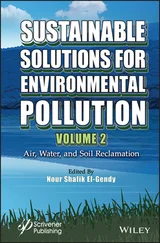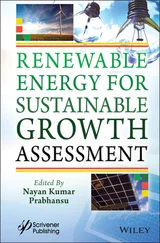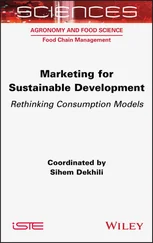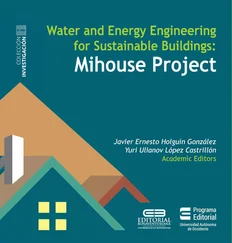33 33 Zhang, J., Lin, X.G., Liu, W.W., and Yin, R. (2012). Response of soil microbial community to the bioremediation of soil contaminated with PAHs. Huan Jing Ke Xue 33: 2825–2831.
34 34 Cazals, F., Huguenot, D., Crampon, M. et al. (2020). Production of biosurfactant using the endemic bacterial community of a PAHs contaminated soil, and its potential use for PAHs remobilization. Sci. Total Environ. 709: 136143.
35 35 Satyanarayana, T., Johri, B.N., and Prakash, A. (2012). Microorganisms in Sustainable Agriculture and Biotechnology. New York: Springer, Dordrecht.
36 36 de Almeida Couto, C.R., Alvarez, V.M., Marques, J.M. et al. (2015). Exploiting the aerobic endospore‐forming bacterial diversity in saline and hypersaline environments for biosurfactant production. BMC Microbiol. 15: 240.
37 37 Silva, M.A., Silva, A.F., Rufino, R.D. et al. (2017). Production of biosurfactants by Pseudomonas species for application in the petroleum industry. Water Environ. Res. 89: 117–126.
38 38 Nguyen, T.T., Quyen, T.D., and Le, H.T. (2013). Cloning and enhancing production of a detergent‐and organic‐solvent‐resistant nattokinase from Bacillus subtilis VTCC‐DVN‐12‐01 by using an eight‐protease‐gene‐deficient Bacillus subtilis WB800. Microb. Cell Fact. 12 (1): 79.
39 39 Jenneman, G.E., McInerney, M.J., Knapp, R.M., Clark, J.B., Feero, J.M., Revus, D.E. and Menzie, D.E., (1983). Halotolerant, biosurfactant‐producing Bacillus species potentially useful for enhanced oil recovery. Dev. Ind. Microbiol. (United States), 24(CONF‐8208164‐).
40 40 Almeida, P.F.D., Moreira, R.S., Almeida, R.C.D.C. et al. (2004). Selection and application of microorganisms to improve oil recovery. Eng. Life Sci. 4 (4): 319–325.
41 41 Horowitz, S. and Griffin, W.M. (1991). Structural analysis of Bacillus licheniformis 86 surfactant. J. Ind. Microbiol. 7 (1): 45–52.
42 42 Coronel‐Leon, J., Pinazo, A., Perez, L. et al. (2017). Lichenysin‐geminal amino acid‐based surfactants: Synergistic action of an unconventional antimicrobial mixture. Colloids Surf. B Biointerfaces 149: 38–47.
43 43 Makkar, R.S. and Cameotra, S.S. (1997). Utilization of molasses for biosurfactant production by two Bacillus strains at thermophilic conditions. J. Am. Oil Chem. Soc. 74 (7): 887–889.
44 44 Abouseoud, M., Maachi, R., Amrane, A. et al. (2008). Evaluation of different carbon and nitrogen sources in production of biosurfactant by Pseudomonas fluorescens. Desalination 223 (1–3): 143–151.
45 45 Mohanram, R., Jagtap, C., and Kumar, P. (2016). Isolation, screening, and characterization of surface‐active agent‐producing, oil‐degrading marine bacteria of Mumbai Harbor. Mar. Pollut. Bull. 105: 131–138.
46 46 Khan, A.H.A., Tanveer, S., Alia, S. et al. (2017). Role of nutrients in bacterial biosurfactant production and effect of biosurfactant production on petroleum hydrocarbon biodegradation. Ecol. Eng. 104: 158–164.
47 47 Choi, J.W., Choi, H.G., and Lee, W.H. (1996). Effects of ethanol and phosphate on emulsan production by Acinetobacter calcoaceticus RAG‐1. J. Biotechnol. 45 (3): 217–225.
48 48 Hassanshahian, M., Emtiazi, G., and Cappello, S. (2012). Isolation and characterization of crude‐oil‐degrading bacteria from the Persian Gulf and the Caspian Sea. Mar. Pollut. Bull. 64: 7–12.
49 49 Peng, F., Liu, Z., Wang, L., and Shao, Z. (2007). An oil‐degrading bacterium: Rhodococcus erythropolis strain 3C‐9 and its biosurfactants. J. Appl. Microbiol. 102: 1603–1611.
50 50 Wojciechowski, K., Orczyk, M., Gutberlet, T., and Geue, T. (2016). Complexation of phospholipids and cholesterol by triterpenic saponins in bulk and in monolayers. Biochim. Biophys. Acta 1858: 363–373.
51 51 Ma, T., Li, G., Li, J. et al. (2006). Desulfurization of dibenzothiophene by Bacillus subtilis recombinants carrying dszABC and dszD genes. Biotechnol. Lett. 28: 1095–1100.
52 52 Mishra, S., Singh, S.N., and Pande, V. (2014). Bacteria induced degradation of fluoranthene in minimal salt medium mediated by catabolic enzymes in vitro condition. Bioresour. Technol. 164: 299–308.
53 53 Miao, S., Dashtbozorg, S.S., Callow, N.V., and Ju, L.K. (2015). Rhamnolipids as platform molecules for production of potential anti‐zoospore agrochemicals. J. Agric. Food Chem. 63: 3367–3376.
54 54 Mouillon, J.M. and Persson, B.L. (2006). New aspects on phosphate sensing and signalling in Saccharomyces cerevisiae. FEMS Yeast Res. 6 (2): 171–176.
55 55 Rivera, O.M.P., Moldes, A.B., Torrado, A.M., and Domínguez, J.M. (2007). Lactic acid and biosurfactants production from hydrolyzed distilled grape marc. Process Biochem. 42 (6): 1010–1020.
56 56 Sachdev, D.P. and Cameotra, S.S. (2013). Biosurfactants in agriculture. Appl. Microbiol. Biotechnol. 97 (3): 1005–1016.
57 57 Sriram, M.I., Kalishwaralal, K., Deepak, V. et al. (2011). Biofilm inhibition and antimicrobial action of lipopeptide biosurfactant produced by heavy metal tolerant strain Bacillus cereus NK1. Colloids Surf. B Biointerfaces 85 (2): 174–181.
58 58 Dubey, P., Kumar, S., Aswal, V.K. et al. (2016). Silk fibroin‐sophorolipid gelation: Deciphering the underlying mechanism. Biomacromolecules 17: 3318–3327.
59 59 Yilmaz, F., Ergene, A., Yalcin, E., and Tan, S. (2009). Production and characterization of biosurfactants produced by microorganisms isolated from milk factory wastewaters. Environ. Technol. 30: 1397–1404.
60 60 Basak, G. and Das, N. (2014). Characterization of sophorolipid biosurfactant produced by Cryptococcus sp. VITGBN2 and its application on Zn (II) removal from electroplating wastewater. J. Environ. Biol. 35 (6): 1087.
61 61 Falode, O.A., Adeleke, M.A., and Ogunshe, A.A. (2017). Evaluation of indigenous biosurfactant‐producing bacteria for de‐emulsification of crude oil emulsions. Microbiol. Res. J. Int. 18: 1–9.
62 62 Zinjarde, S., Chinnathambi, S., Lachke, A.H., and Pant, A. (1997). Isolation of an emulsifier from Yarrowia lipolytica NCIM 3589 using a modified mini isoelectric focusing unit. Lett. Appl. Microbiol. 24 (2): 117–121.
63 63 Fontes, G.C., Fonseca Amaral, P.F., Nele, M., and Zarur Coelho, M.A. (2010). Factorial design to optimize biosurfactant production by Yarrowia lipolytica. Biomed. Res. Int. 2010: 821306.
64 64 Stüwer, O., Hommel, R., Haferburg, D., and Kleber, H.P. (1987). Production of crystalline surface‐active glycolipids by a strain of Torulopsis apicola. J. Biotechnol. 6 (4): 259–269.
65 65 Vacheron, J., Desbrosses, G., Bouffaud, M.L. et al. (2013). Plant growth‐promoting rhizobacteria and root system functioning. Front. Plant Sci. 4: 356.
66 66 Sarubbo, L.A., do Carmo Marçal, M., Neves, M.L.C. et al. (2001). Bioemulsifier production in batch culture using glucose as carbon source by Candida lipolytica. Appl. Biochem. Biotechnol. 95 (1): 59–67.
67 67 Bernard, A. and Payton, M. (1995). Fermentation and growth of Escherichia coli for optimal protein production. Curr. Protoc. Protein Sci. 1: 5–3.
68 68 Blank, L.L., Grosso, L.J., and Benson, J.J. (1984). A survey of clinical skills evaluation practices in internal medicine residency programs. J. Med. Educ. 59 (5): 401–406.
69 69 Brück, H., Coutte, F., Delvigne, F., Dhulster, P. and Jacques, P., (2020). Optimization of biosurfactant production in a trickle‐bed biofilm reactor with genetically improved bacteria. Poster presented at the 25th National Symposium for Applied Biological Science. Available at: http://hdl.handle.net/2268/247270.
70 70 Atlić, A., Koller, M., Scherzer, D. et al. (2011). Continuous production of poly ([R]‐3‐hydroxybutyrate) by Cupriavidus necator in a multistage bioreactor cascade. Appl. Microbiol. Biotechnol. 91 (2): 295–304.
71 71 Brumano, L.P., Antunes, F.A.F., Souto, S.G. et al. (2017). Biosurfactant production by Aureobasidium pullulans in stirred tank bioreactor: new approach to understand the influence of important variables in the process. Bioresour. Technol. 243: 264–272.
Читать дальше












